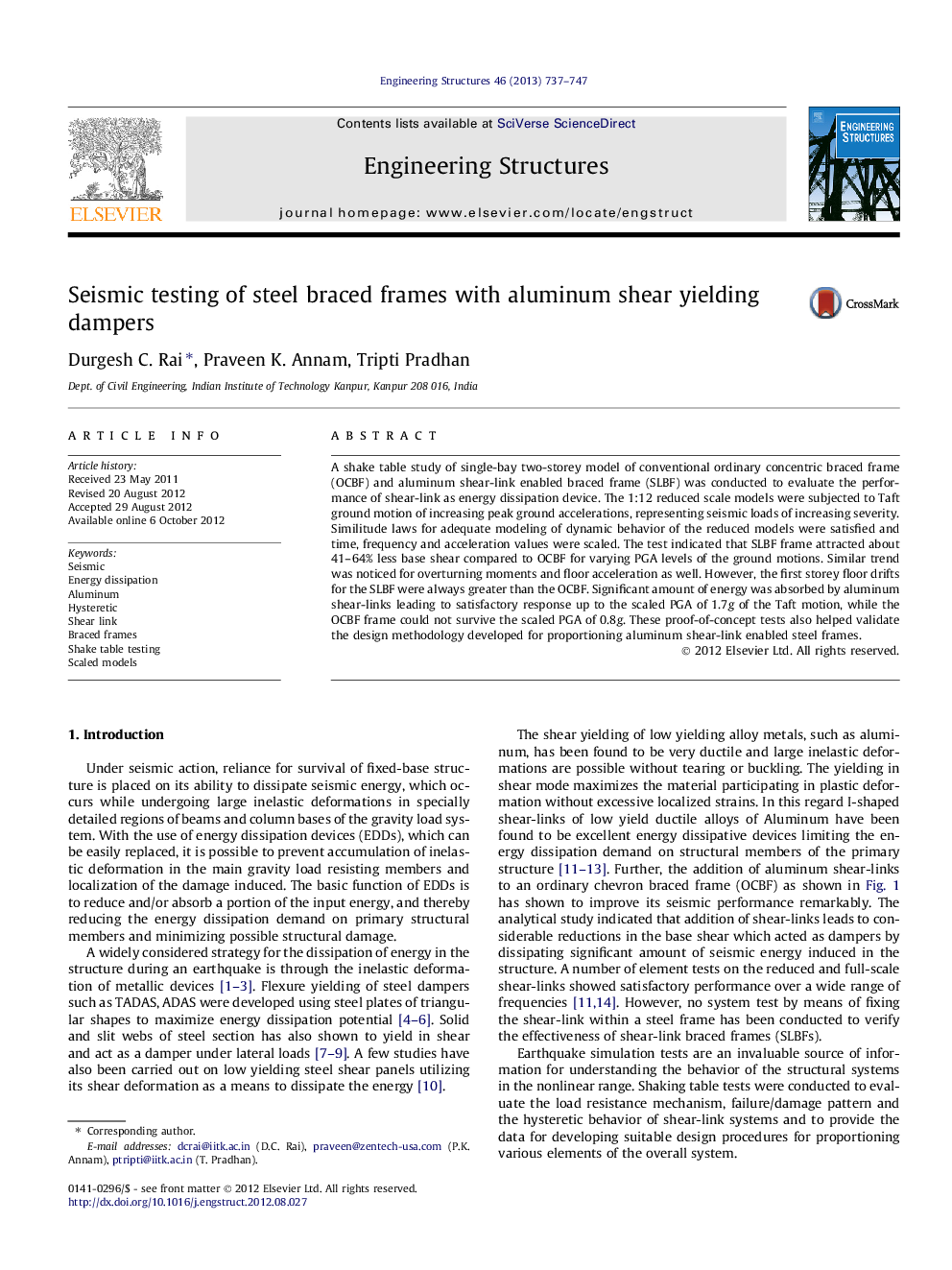| Article ID | Journal | Published Year | Pages | File Type |
|---|---|---|---|---|
| 267364 | Engineering Structures | 2013 | 11 Pages |
A shake table study of single-bay two-storey model of conventional ordinary concentric braced frame (OCBF) and aluminum shear-link enabled braced frame (SLBF) was conducted to evaluate the performance of shear-link as energy dissipation device. The 1:12 reduced scale models were subjected to Taft ground motion of increasing peak ground accelerations, representing seismic loads of increasing severity. Similitude laws for adequate modeling of dynamic behavior of the reduced models were satisfied and time, frequency and acceleration values were scaled. The test indicated that SLBF frame attracted about 41–64% less base shear compared to OCBF for varying PGA levels of the ground motions. Similar trend was noticed for overturning moments and floor acceleration as well. However, the first storey floor drifts for the SLBF were always greater than the OCBF. Significant amount of energy was absorbed by aluminum shear-links leading to satisfactory response up to the scaled PGA of 1.7g of the Taft motion, while the OCBF frame could not survive the scaled PGA of 0.8g. These proof-of-concept tests also helped validate the design methodology developed for proportioning aluminum shear-link enabled steel frames.
► Shake table tests conducted for aluminum shear-links as energy dissipation device in steel frames. ► Taft ground motion of increasing peak ground accelerations (PGAs), was used for seismic loads. ► Response of ordinary concentric braced frame (OCBF) and shear-link braced frame (SLBF) compared. ► Peak base shear, overturning moments and floor accelerations were much smaller in SLBF than in OCBF. ► Satisfactory response observed for SLBF upto scaled PGA of 1.7g, while OCBF could not survive 0.8g.
